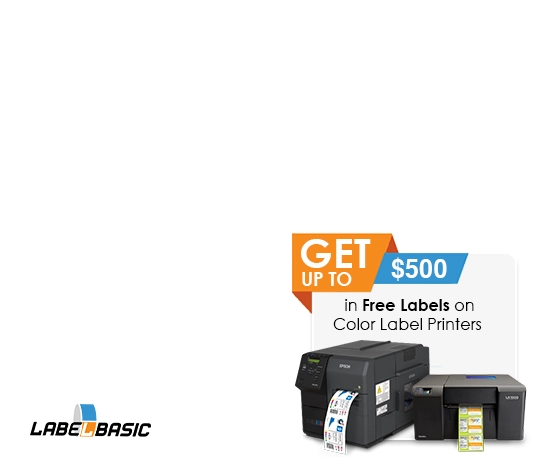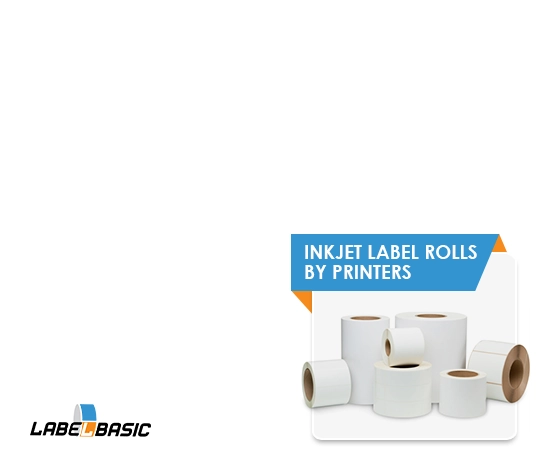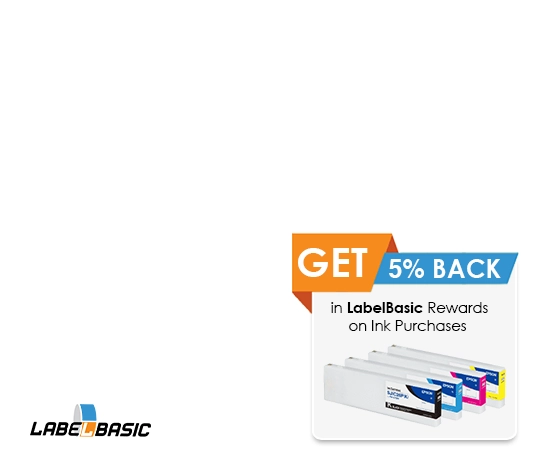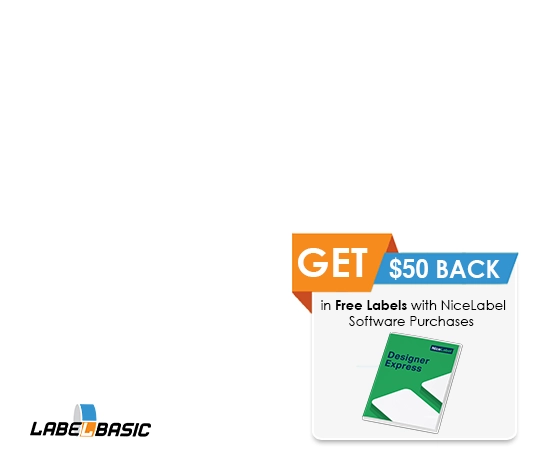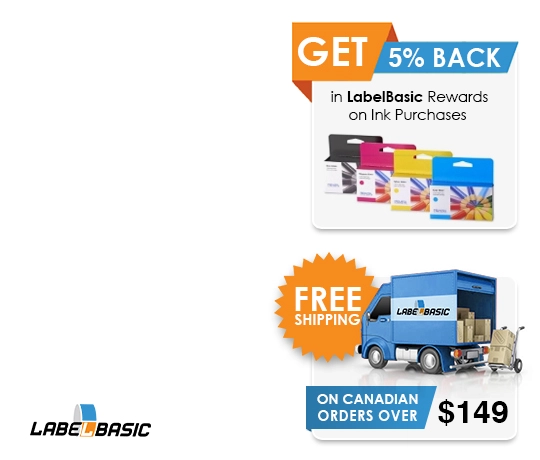How to Design Effective Product Labels: Tips and Tricks
In today’s competitive marketplace, the importance of product label design cannot be overstated. A well-designed product label not only attracts customers’ attention but also conveys crucial information about your product and brand. With just a glance, an effective label should entice potential buyers, create a positive impression, and ultimately, contribute to boosting sales.
Product labels serve as the face of your brand, showcasing its identity and differentiating it from competitors. They help establish trust and credibility, especially for small businesses trying to make a name for themselves in a crowded space. To create high-quality, professional labels that effectively communicate your brand’s message, it’s essential to utilize the right tools and equipment.
One of the critical components for creating stunning labels is the use of inkjet label rolls. These label rolls are designed specifically for use with inkjet color label printers, ensuring high-resolution and vibrant prints. Inkjet label rolls come in various materials, such as matte and glossy, giving you the flexibility to choose the perfect finish for your product labels.
Color label printers have evolved significantly over the years, providing small businesses with the ability to produce professional-quality labels in-house. These printers offer high-resolution printing, a wide color gamut, and the capability to print on various label materials. Some popular models, such as the Epson C4000 and Primera LX500, are specifically designed for small businesses, offering ease of use, fast printing speeds, and cost-effective operation.
By understanding the importance of product label design and investing in the right tools, such as inkjet label rolls and high-quality color label printers, small businesses can create eye-catching, professional labels that effectively attract customers and boost sales. In the following sections, we will explore tips and tricks for designing effective product labels, from choosing the right label material and printer to optimizing readability and aesthetics.
Choosing the Right Label Material
Matte labels vs. glossy labels: pros and cons
When selecting label material, one important consideration is whether to opt for a matte or glossy finish. Each finish has its unique advantages and disadvantages, which can influence your decision based on the product type and desired visual appearance.
Matte Labels
Pros:
- Non-reflective surface, making the label easy to read from various angles and under different lighting conditions
- Minimalist and sophisticated look
- Less prone to smudging or fingerprint marks
- Easier to write on, if necessary
Cons:
- Colors may appear less vibrant compared to glossy labels
- Less resistant to moisture and water damage without additional coating or lamination
Glossy Labels: Pros:
- Bright, vibrant colors that stand out and capture attention
- Smooth and shiny finish, providing a high-quality and professional appearance
- More resistant to moisture and water damage due to the protective coating
Cons:
- Reflective surface, which can make the label harder to read under certain lighting conditions
- More prone to smudging and fingerprints
- Writing on the surface may require special pens or markers
Considerations for product type, shelf life, and environmental factors
When choosing label materials, it’s essential to consider the product type, shelf life, and environmental factors that the product will be exposed to. These factors will determine the durability and functionality required for your label material.
Product Type: Labels for food products, for example, may require specific materials that are safe for direct contact with food and resistant to oils and moisture. Labels for cosmetic or personal care products need to withstand exposure to water, creams, or oils without losing their adhesion or appearance.
Shelf Life: Products with a long shelf life may require label materials that are more resistant to fading, wear, and tear. UV-resistant and laminated materials can help ensure that labels maintain their appearance over time.
Environmental Factors: Products exposed to harsh environmental conditions, such as high or low temperatures, humidity, or direct sunlight, may require more durable label materials. For outdoor products or those exposed to chemicals, you may need to consider waterproof, UV-resistant, or chemical-resistant materials.
Matching label materials with specific color label printers
Not all label materials are compatible with every color label printer. It’s important to ensure that your chosen label material is suitable for use with your specific printer model. Most printer manufacturers provide a list of compatible materials, making it easier for you to find the perfect match.
Factors to consider when matching label materials with your color label printer include:
- Printer type (inkjet or thermal transfer)
- Print resolution and color capabilities
- Ink or ribbon type (dye-based, pigment-based, or thermal)
- Material adhesive properties and compatibility with the printer’s feeding mechanism
By carefully considering the finish, product type, shelf life, environmental factors, and printer compatibility, you can select the ideal label material for your needs, ensuring professional and effective product labels.
Selecting a High-Quality Color Label Printer
Importance of printer choice in achieving professional label designs
Selecting a high-quality color label printer is crucial in achieving professional and eye-catching label designs. The right printer will ensure that your labels are printed with crisp text, vibrant colors, and sharp images, making your product stand out on the shelves. In addition to the visual appeal, a reliable printer will provide consistent performance, minimize downtime, and reduce the overall cost of ownership.
Comparing popular color label printers: Epson C4000 and Primera LX500
Two popular color label printers on the market are the Epson C4000 and Primera LX500. Both are designed with small businesses in mind and offer unique features to cater to different needs.
Epson ColorWorks CW-C4000
- Print resolution of up to 1200 x 1200 dpi, ensuring high-quality and detailed prints
- Fast print speeds of up to 5 inches per second, allowing for efficient label production
- Uses Epson’s PrecisionCore technology, which provides accurate color reproduction and excellent print quality
- Utilizes pigment-based inks for increased durability and resistance to fading, smudging, and water damage
- Can handle a wide range of label materials, including matte, glossy, and synthetic labels
Primera LX500
- Print resolution of up to 4800 x 1200 dpi, delivering sharp and vivid prints
- Compact design, making it suitable for small workspaces
- Uses dye-based inks, which produce vibrant and bright colors, but may be less resistant to fading and moisture compared to pigment-based inks
- Designed for lower-volume label production, making it ideal for businesses that require occasional or small-batch label printing
- Compatible with a variety of label materials, including paper, polyester, and polypropylene
Evaluating printer features, print resolution, and ink type
When selecting a color label printer, it’s essential to consider the specific features and capabilities that align with your business needs. Some factors to consider include:
Print Resolution: Higher print resolution translates to more detailed and sharper prints, which can enhance the professional appearance of your labels. However, higher resolution printers may come at a higher cost.
Print Speed: Faster print speeds can increase productivity, especially for businesses with high-volume label production. It’s important to balance speed with print quality, as some printers may sacrifice quality for speed.
Ink Type: The choice between dye-based and pigment-based inks will depend on your specific requirements. Dye-based inks generally produce brighter and more vibrant colors, while pigment-based inks offer better durability and resistance to fading, smudging, and water damage.
Material Compatibility: Ensure that the printer can handle the label materials you plan to use, such as matte or glossy paper, synthetic materials, or even specialized materials like foil or holographic labels.
Connectivity and Software: Consider how the printer connects to your computer (e.g., USB, Ethernet, or Wi-Fi) and the compatibility with your preferred design software.
By carefully evaluating printer features, print resolution, and ink type, you can select the best color label printer for your business needs, ensuring professional and effective product labels.
Designing for Optimal Readability and Aesthetics
Tips for selecting the right font, size, and color combinations
The choice of font, size, and color combinations plays a significant role in the readability and aesthetics of your product labels. To ensure that your labels are visually appealing and easy to read, consider the following tips:
Font: Choose a font that is legible and complements your brand identity. Avoid overly decorative or complex fonts that may be difficult to read, especially at smaller sizes. Consider using one or two complementary fonts – one for headings and another for body text – to maintain consistency and visual hierarchy.
Size: Ensure that your text is large enough to be easily read from a reasonable distance. Keep in mind that different label sizes and shapes may require different font sizes for optimal readability. Test your design by printing samples and verifying that the text is legible.
Color Combinations: Select colors that provide sufficient contrast between the text and the background to ensure easy readability. Avoid using colors that are too similar in tone or brightness, as this may make the text difficult to read. Additionally, choose a color palette that aligns with your brand identity and evokes the desired emotional response from your target audience.
Creating a clear and concise label layout
An effective label layout is clear, concise, and well-organized. To create a layout that maximizes readability and visual appeal, consider the following guidelines:
Hierarchy: Organize the label’s content according to its importance, ensuring that the most critical information (such as the product name or brand) is the most prominent. Use font size, weight, and color to create a visual hierarchy that guides the reader’s eye through the label.
White Space: Leave adequate space between text and design elements to avoid a cluttered appearance. White space can help improve readability and make your label look more professional.
Alignment: Align your text and design elements consistently to create a clean and organized look. Choose either left, right, or center alignment and apply it consistently throughout the label.
Consistency: Maintain consistency in font, color, and design elements across your entire product line to create a cohesive brand identity.
Incorporating images and logos for visual appeal
Images and logos can enhance the visual appeal of your product labels and help communicate your brand’s identity. When incorporating images and logos into your label design, keep the following tips in mind:
Quality: Use high-resolution images and vector logos to ensure crisp and sharp prints. Low-quality images may appear pixelated or blurry when printed, diminishing the label’s overall appearance.
Relevance: Choose images that are relevant to your product and brand, and that evoke the desired emotional response from your target audience. Avoid using images that may confuse or mislead the customer.
Size and Placement: Ensure that your images and logos are appropriately sized and placed within the label design, without overpowering or detracting from the essential information. Consider the balance between visual elements and text to create a harmonious and visually appealing design.
Consistency: Like other design elements, maintain consistency in the use of images and logos across your product line to reinforce your brand identity.
By carefully considering font, size, color combinations, layout, and the use of images and logos, you can create product labels that are both aesthetically pleasing and easily readable, maximizing their effectiveness in attracting customers and promoting your brand.
Ensuring Label Durability and Adhesion
Factors affecting label adhesion, such as surface material and temperature
Label adhesion is crucial for maintaining the appearance and functionality of your product labels. Several factors can affect label adhesion, including the surface material and temperature conditions.
Surface Material: The material to which the label will be applied plays a significant role in adhesion. Labels adhere differently to various surfaces, such as glass, plastic, metal, or paper. Ensure that the label material and adhesive you choose are compatible with your product’s surface material for optimal adhesion.
Surface Texture: Labels adhere better to smooth, flat surfaces compared to rough or textured surfaces. If your product has a textured surface, consider using a label material and adhesive specifically designed for such surfaces.
Surface Cleanliness: Labels adhere best to clean, dry, and oil-free surfaces. Ensure that the surface is clean and free of any contaminants before applying the label.
Temperature: Both the temperature of the product surface and the environment can affect label adhesion. Adhesives may perform differently under different temperature conditions, so it’s essential to choose a label material with an adhesive suited to your product’s specific temperature requirements.
Proper application techniques for inkjet label rolls
To ensure strong adhesion and a professional appearance, it’s important to follow proper application techniques when applying labels printed on inkjet label rolls:
- Surface Preparation: As mentioned earlier, make sure the surface is clean, dry, and free of any contaminants before applying the label.
- Label Alignment: Carefully align the label with the product’s surface, ensuring that it is straight and centered. Misaligned labels can appear unprofessional and may affect the overall perception of your product.
- Application Pressure: Apply even pressure to the label, starting from the center and working outward. This will help eliminate air bubbles and ensure that the adhesive makes full contact with the surface.
- Cure Time: After applying the label, allow the adhesive to set or cure for the recommended amount of time, as specified by the label material manufacturer. This will help ensure optimal adhesion and longevity.
Importance of testing labels for durability and longevity
Testing your labels for durability and longevity is essential in ensuring that they will withstand various conditions throughout their lifecycle. This may include exposure to moisture, chemicals, temperature fluctuations, or UV light. Performing durability tests can help identify any potential issues or weaknesses in your label materials, adhesives, or printing process, allowing you to make adjustments and improvements as needed.
Some common durability tests include:
- Adhesion Tests: Assess the strength of the adhesive bond between the label and the product surface by applying and removing the label under various conditions.
- Abrasion Resistance: Determine the label’s resistance to wear and tear by simulating friction or rubbing against other surfaces.
- Moisture Resistance: Test the label’s performance under exposure to moisture or humidity, such as submersion in water or exposure to high humidity environments.
- UV Resistance: Expose the label to UV light to assess its resistance to fading or discoloration caused by sunlight.
By considering factors affecting label adhesion, applying labels properly, and testing for durability and longevity, you can ensure that your product labels remain visually appealing and functional throughout their lifespan. This not only reflects positively on your brand but also helps maintain customer trust and satisfaction.
Leveraging Color to Enhance Brand Identity
The psychology of color in marketing and branding
Color plays a crucial role in marketing and branding, as it can evoke emotional responses, influence perceptions, and communicate messages without words. Different colors can have varying psychological effects on consumers, and understanding these effects can help you make more informed decisions when selecting colors for your brand and product labels. Some examples of color associations include:
- Red: Often associated with passion, excitement, and energy, red can be used to create a sense of urgency or grab attention.
- Blue: Blue is associated with trust, stability, and calmness. It is often used by brands that want to convey reliability and professionalism.
- Green: Green represents nature, growth, and health. It can be used to emphasize eco-friendliness or organic qualities in products.
- Yellow: Yellow is associated with happiness, optimism, and warmth, but it can also signify caution. It is often used to create a sense of cheerfulness and positivity.
- Purple: Purple is associated with luxury, creativity, and mystery. It can be used to convey a sense of sophistication and exclusivity.
Selecting a color palette that resonates with target customers
To create a color palette that resonates with your target customers, consider the following guidelines:
Research your target audience: Understand the preferences, expectations, and needs of your target customers. This will help you choose colors that will appeal to them and align with their values.
Analyze competitor branding: Examine the color choices of your competitors to identify trends and potential gaps in the market. This can help you differentiate your brand and stand out from the competition.
Consider cultural factors: Be aware of cultural differences in color perception and symbolism, especially if your products are marketed to diverse audiences. This can help you avoid misunderstandings and ensure that your color choices are well-received by your target customers.
Test and refine: Experiment with different color combinations and gather feedback from your target audience to identify the most effective and appealing palette. This can help you optimize your color choices for maximum impact.
Consistency in color usage across product lines and marketing materials
Maintaining consistency in color usage across your product lines and marketing materials is essential for reinforcing your brand identity and creating a cohesive visual experience for your customers. To achieve consistency, consider the following tips:
Develop a brand style guide: Create a comprehensive style guide that outlines your brand’s color palette, including primary and secondary colors, as well as guidelines for their usage. This will help ensure that all designers and team members adhere to the same color standards.
Use color codes: Utilize color codes (such as RGB, CMYK, or Pantone) to ensure that colors are reproduced accurately across various platforms, such as print materials, digital screens, and packaging.
Consistency in product labels: Apply your color palette consistently across all product labels to create a unified look and make your products easily identifiable on store shelves.
Integrate colors into marketing materials: Incorporate your brand colors into all marketing materials, such as advertisements, websites, social media posts, and promotional items, to create a consistent visual identity.
By understanding the psychology of color, selecting a color palette that resonates with your target customers, and maintaining consistency in color usage, you can leverage color to enhance your brand identity and create a memorable and impactful visual experience for your customers.
Incorporating Regulatory and Industry-Specific Information:
Understanding label requirements for different industries (e.g., food, cosmetics, pharmaceuticals)
Different industries have specific labeling requirements that must be followed to ensure compliance with regulations and consumer safety. Here are some examples of label requirements for various industries:
- Food: Food labels must include information such as the product name, net weight or quantity, ingredients list, allergen information, nutritional facts, manufacturer or distributor contact information, and expiration or best-before dates. In some countries, front-of-pack nutrition labeling may also be required.
- Cosmetics: Cosmetic product labels should include the product name, net weight or volume, ingredients list, any warning statements, usage instructions, and manufacturer or distributor contact information. In some cases, additional information may be required, such as batch numbers, expiration dates, or special storage instructions.
- Pharmaceuticals: Pharmaceutical labels must contain critical information, such as the drug’s name, strength, dosage instructions, side effects, storage conditions, lot number, expiration date, and manufacturer or distributor contact information. Additionally, they must include any required warning statements, and in some countries, patient information leaflets must be provided.
It is essential to research and understand the specific labeling requirements for your industry and the countries you are marketing your products in to ensure compliance and avoid potential penalties.
Incorporating barcodes and QR codes for improved traceability
Barcodes and QR codes can be valuable additions to your product labels, as they improve traceability and provide quick access to additional information. Some benefits of incorporating these codes include:
Inventory management: Barcodes can help streamline inventory management by allowing easy tracking of product quantities and movement.
Point-of-sale (POS) systems: Barcodes facilitate efficient POS transactions, reducing the likelihood of human errors in pricing and improving the overall customer experience.
Access to additional information: QR codes can be scanned by consumers using their smartphones, allowing them to access further product information, promotions, or even user reviews.
Regulatory compliance: In some industries, barcodes or QR codes may be required for tracking purposes or to provide specific product information as mandated by regulations.
Ensuring compliance with relevant standards and regulations
To ensure that your product labels comply with all relevant standards and regulations, consider the following steps:
Research and familiarize yourself with industry-specific regulations and guidelines for product labeling in the countries where your products will be sold.
Consult with industry experts or regulatory agencies for guidance on labeling requirements and best practices.
Review your label designs carefully to ensure that all required information is included, and that it is presented in a clear, concise, and compliant manner.
Stay up-to-date with any changes in regulations, as labeling requirements can evolve over time. Regularly review and update your labels as needed to maintain compliance.
Consider working with third-party certification or testing organizations to verify compliance with specific industry standards, such as organic or fair-trade certifications.
By incorporating regulatory and industry-specific information into your product labels and ensuring compliance with relevant standards and regulations, you can build consumer trust and confidence in your products while avoiding potential legal issues and penalties.
In Summary
Designing effective product labels is crucial for attracting customers, boosting sales, and building a strong brand identity. To ensure your product labels are visually appealing and compliant with industry standards, keep these key tips and tricks in mind:
Understand the importance of product label design and the tools available for creating high-quality labels, such as inkjet label rolls and color label printers.
Choose the right label material, considering factors like product type, shelf life, and environmental conditions, as well as compatibility with specific color label printers.
Select a high-quality color label printer that best suits your needs, comparing popular options such as the Epson C4000 and Primera LX500 based on features, print resolution, and ink type.
Design labels with optimal readability and aesthetics, focusing on font selection, label layout, and the incorporation of images and logos.
Ensure label durability and adhesion by considering factors like surface material and temperature, applying labels correctly, and testing for longevity.
Leverage color to enhance brand identity by understanding the psychology of color, selecting a color palette that resonates with your target audience, and maintaining consistency in color usage.
Incorporate regulatory and industry-specific information on your labels, complying with relevant standards and regulations, and adding features like barcodes and QR codes for improved traceability.
Investing in high-quality equipment, such as inkjet label rolls and color label printers, will help you achieve professional results that reflect positively on your brand. By prioritizing well-designed product labels, small businesses can create a lasting impression on customers, leading to increased brand recognition, customer loyalty, and ultimately, business success.
